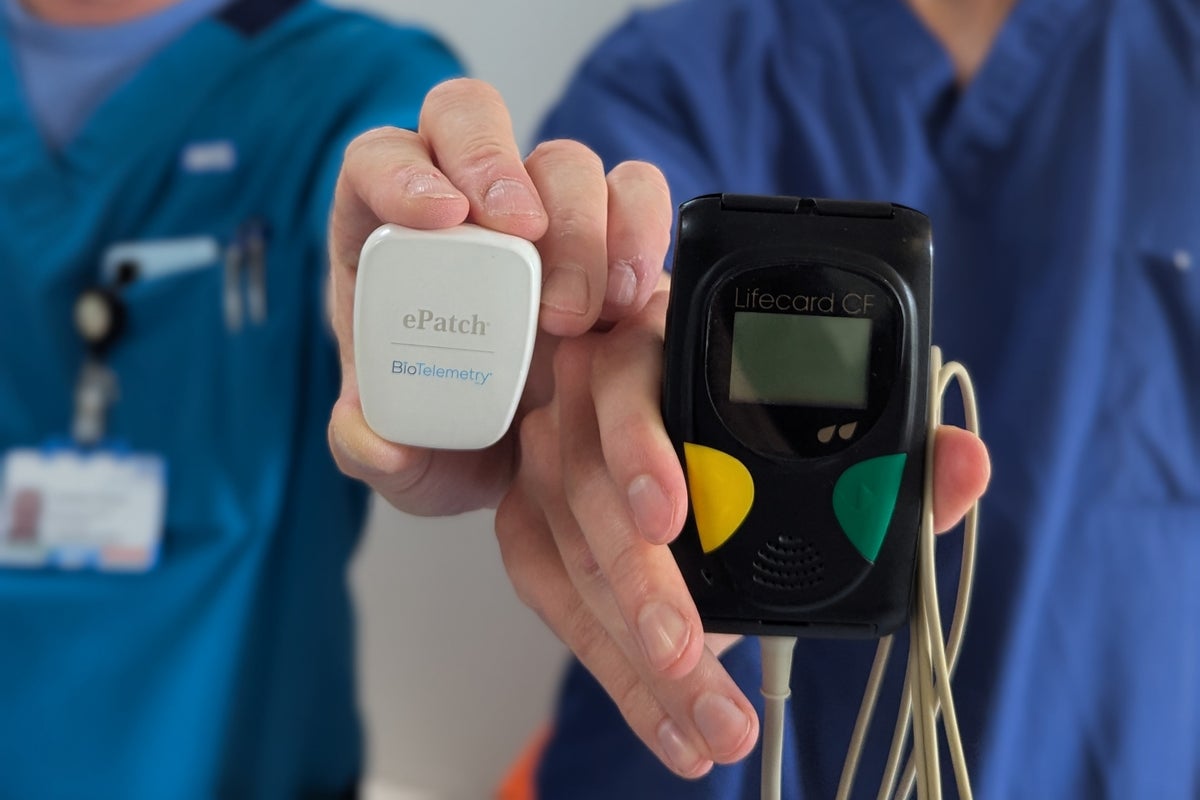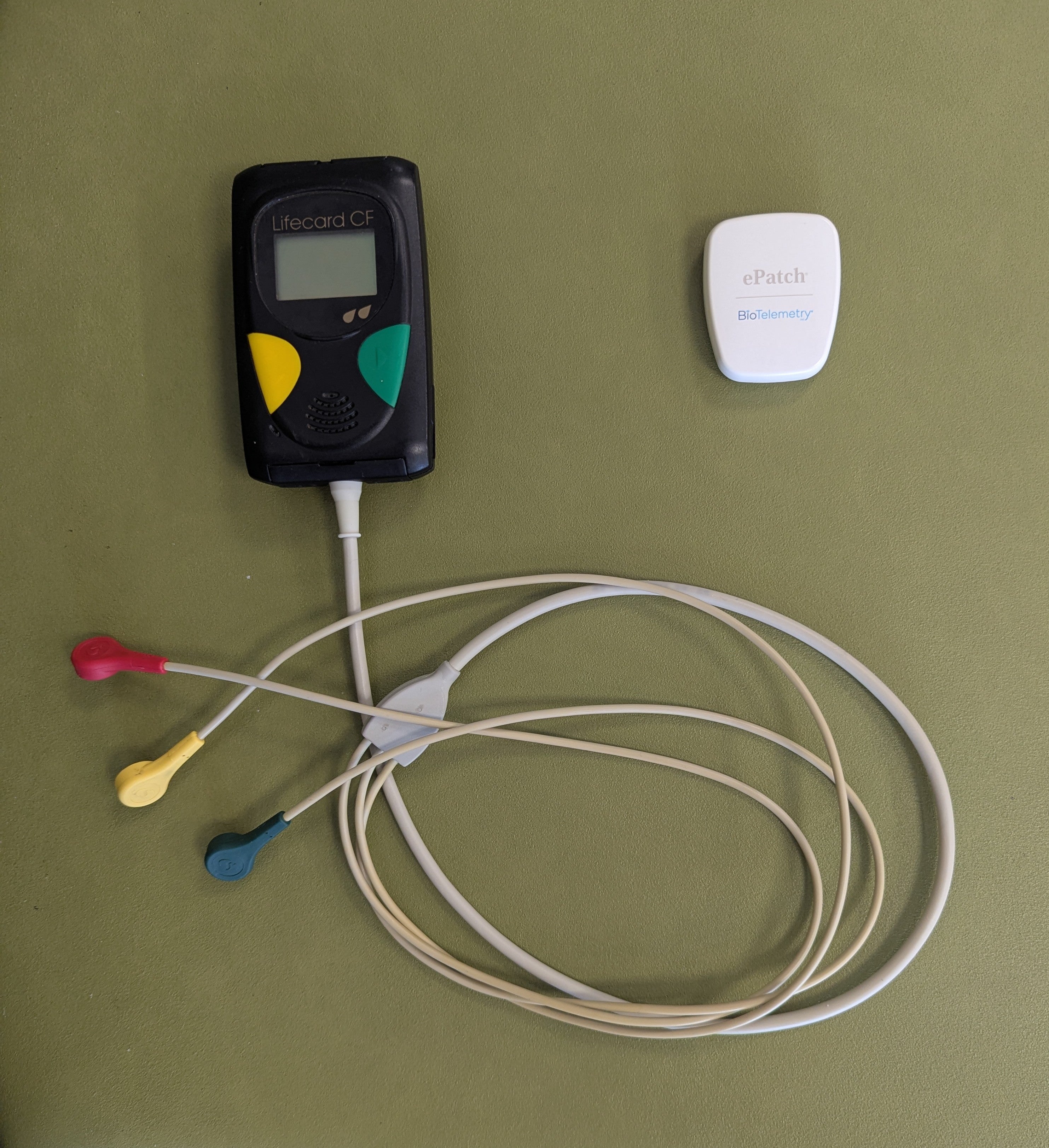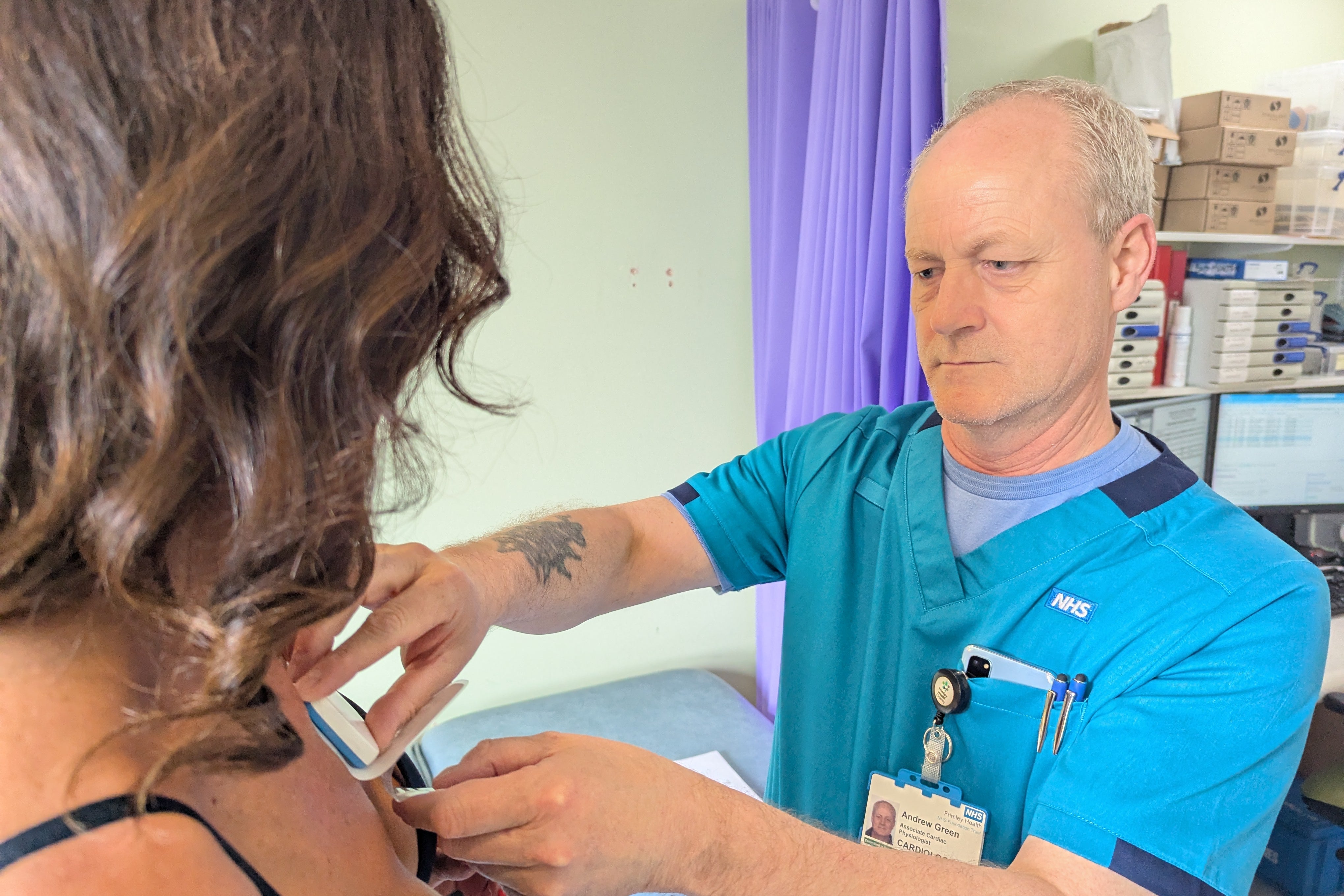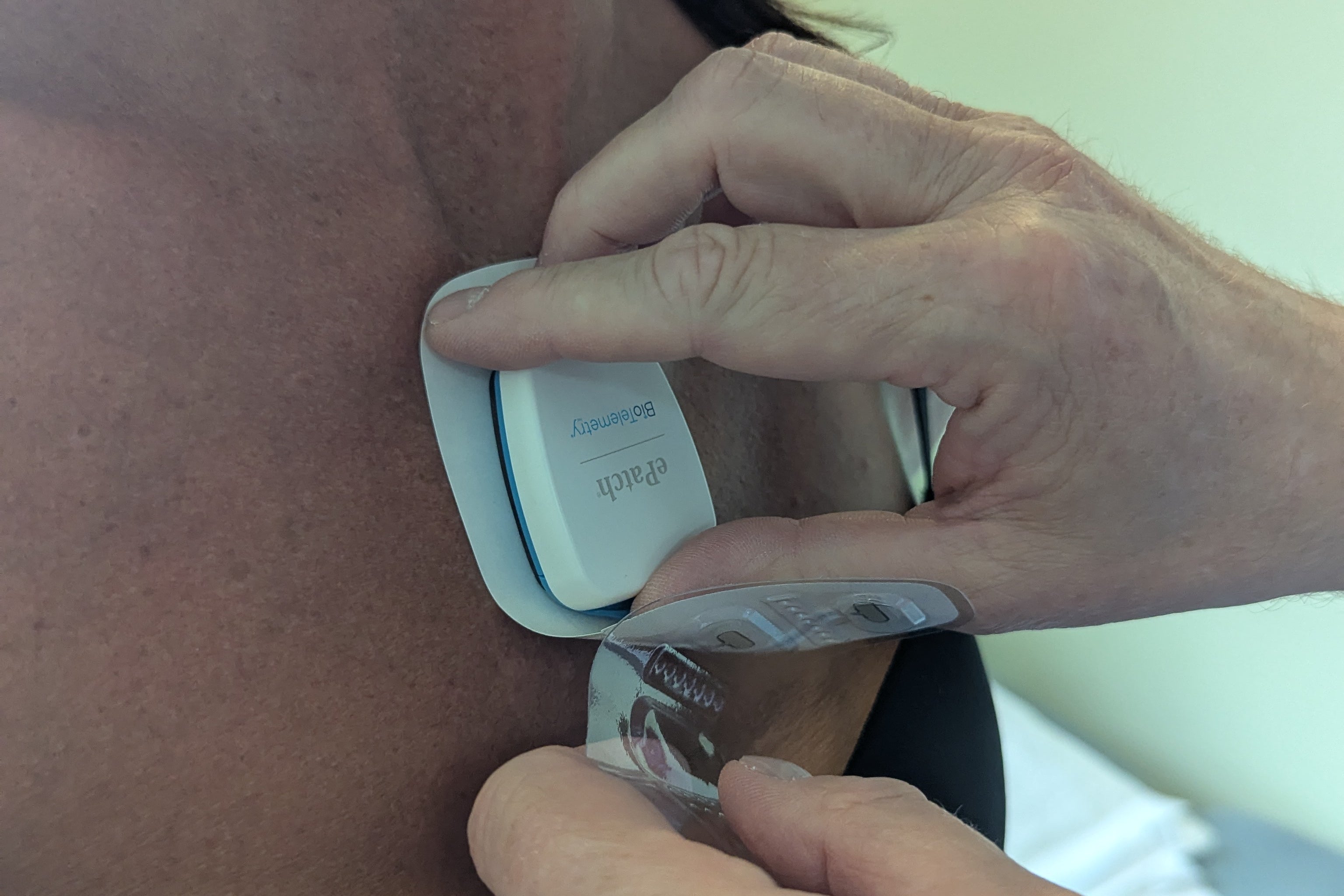
The NHS has started rolling out a new at-home heart monitor designed to detect heart rhythm problems.
Unlike traditional monitors that can require lengthy set-up by a trained physiologist, the innovative kit can be posted to patients for them to attach themselves at home and used to investigate conditions including atrial fibrillation, tachycardia or heart blocks.
The device itself is a small patch that adheres to the skin, while traditional devices see patients hooked up to numerous wires and monitors during hospital visits.
After the new tool is worn for a few days, patients simply post the monitor back, removing the necessity for appointments to fit and remove the equipment.
The collected data is then analysed by an artificial intelligence (AI) tool called Cardiologs, which generates a report for assessment by a physiologist or doctor.
Frimley Health NHS Foundation Trust is the first hospital in the country to roll out the device, with hopes that the device will soon be used across other NHS trusts.

The Trust said it will still use traditional devices, known as Holter monitors, on some patients who are in hospital, but many of those who are outside of hospital will be able to access the new ePatch, which is made by Philips, to use in the comfort of their own homes.
It is estimated that the use of the patches will double productivity levels for diagnosing heart rhythm problems.
Dr Iain Sim, consultant cardiac electrophysiologist, said the purpose of the device is “to record the heart rhythm – to collect electrical signals from the heart – and to try to understand a bit about the patient and what they are experiencing and whether that can be explained by their heart rhythm”.
“This smaller device allows us to measure at the moment up to 10 days.
“The benefits of it are that it is smaller and more convenient, rather than having different wires all over the place.
“We are able to put them on faster, and we’re able to reduce our turnaround times for reports and to get results back to patients faster.”
He said that traditional Holter monitors are attached by trained physiologists, but there is a shortage of these staff members at present.
“Because these are more straightforward, we’ve got specialist nurses who can be quite easily trained to apply them,” he added.

Suzanne Jordan, associate director for medicine at Frimley Health, said the patches can even be sent out to patients for them to attach themselves.
The feedback from the monitors is developed into reports for medics ,which are categorised in a traffic light system, she said.
“Green is perfectly fine – within normal limits; amber may need a clinician to review the report; red means potentially significant pauses or arrhythmia that need an urgent review,” she said.
“It’s been really positive – staff and patients really like it. We can post the patches to patients – there are explicit instructions there in terms of how to put it on, what to do if there’s a problem, and also just to send it back as well.
“Once it comes back, it gets downloaded and the turnaround times are great.”
Ms Jordan added: “If you think of the bigger picture, it means that we’re going to be able to manage our patients quickly.
“We’ve been running clinics by seeing maybe 30 patients in one day, whereas before, we were probably seeing 14 maximum – so we’ve kind of doubled our productivity.”

Asked about the conditions which will be monitored with the devices, Dr Sim added: “Atrial fibrillation (AF) is a really important and common condition that we pick up with these devices, and we’re increasingly looking at whether we can use them to help detect AF that’s not symptomatic, and whether people are increased risk of stroke that we don’t know about.
“The other conditions would relate to other forms of types of tachycardia, so fast heart rates, or episodes of very slow heart rates, such as heart blocks of different degrees, where patients may have palpitations, or they may have fainting or syncope.
“So it allows us to monitor all of those heart rhythms.”
On the use of AI to review the data from the monitors, he added: “I think it’s natural for everyone to be concerned whenever you put the term ‘AI’ into something, but these are pretty well tested algorithms that still have human oversight.”
Mark Leftwich, managing director for Philips UK and Ireland, said studies show Philips ePatch “can spot up to 2.5 times more clinically relevant heart rhythm issues than the traditional Holter monitors – so not only is it more comfortable to wear, it can actually help catch issues that might have been missed before”.
Nurses’ pay severely eroded since 2010 – study
Nurses’ pay has been ‘severely eroded’ since 2010, study reveals
Experts call for end to ‘postcode lottery’ in certain cancer services
DIY heart monitor rolled out to cut hospital waiting lists
Doctors and Streeting set for showdown talks in bid to avoid ‘dangerous’ NHS strike
Child in Liverpool dies after contracting measles, reports claim







